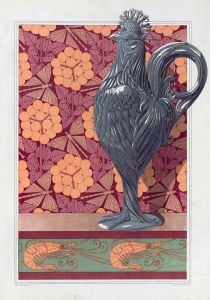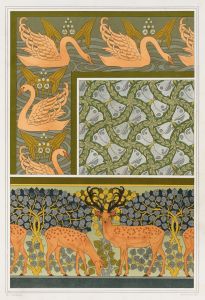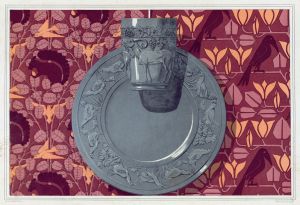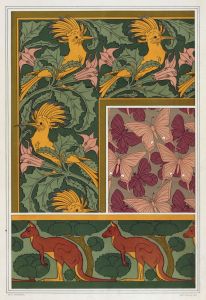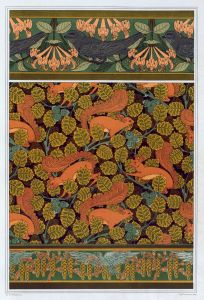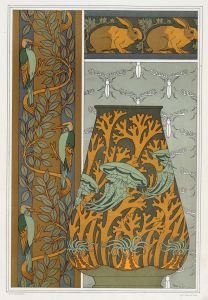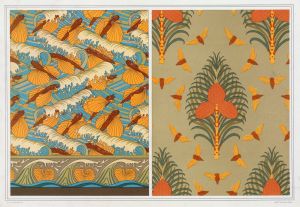
Oiseaux, jeu de fond. Escargots et champignon. Coccinelles et capillaires, étoffe. Faisan dorés et iris, bordure.
A hand-painted replica of Maurice Pillard Verneuil’s masterpiece Oiseaux, jeu de fond. Escargots et champignon. Coccinelles et capillaires, étoffe. Faisan dorés et iris, bordure., meticulously crafted by professional artists to capture the true essence of the original. Each piece is created with museum-quality canvas and rare mineral pigments, carefully painted by experienced artists with delicate brushstrokes and rich, layered colors to perfectly recreate the texture of the original artwork. Unlike machine-printed reproductions, this hand-painted version brings the painting to life, infused with the artist’s emotions and skill in every stroke. Whether for personal collection or home decoration, it instantly elevates the artistic atmosphere of any space.
Maurice Pillard Verneuil was a prominent French artist and designer known for his contributions to the Art Nouveau movement, which flourished from the late 19th century to the early 20th century. His work often featured intricate patterns and a deep appreciation for nature, which is evident in his piece titled "Oiseaux, jeu de fond. Escargots et champignon. Coccinelles et capillaires, étoffe. Faisan dorés et iris, bordure."
This artwork is a testament to Verneuil's skill in integrating natural elements into decorative art. The title itself provides insight into the composition and thematic elements of the piece. "Oiseaux" refers to birds, which are likely a central motif in the design. Verneuil's depiction of birds would typically be stylized, capturing the essence of their form and movement while fitting them into the overall decorative scheme.
The mention of "jeu de fond" suggests a background play or pattern, indicating that the birds are set against a richly detailed backdrop. This is characteristic of Verneuil's work, where the background is as thoughtfully designed as the main subjects, contributing to the overall harmony and balance of the piece.
"Escargots et champignon" translates to snails and mushrooms, elements that further emphasize the natural theme. These motifs are commonly found in Art Nouveau designs, symbolizing the beauty and complexity of the natural world. Verneuil's inclusion of such elements would have been meticulously rendered, showcasing his ability to transform ordinary natural forms into extraordinary decorative art.
"Coccinelles et capillaires" refers to ladybugs and maidenhair ferns. Ladybugs, with their distinctive red and black spots, add a vibrant touch to the composition, while the delicate fronds of maidenhair ferns contribute to the intricate detailing typical of Verneuil's style. These elements would be woven into the fabric of the design, creating a tapestry-like effect that is both visually appealing and thematically cohesive.
The term "étoffe" indicates that the piece is a fabric design, highlighting Verneuil's expertise in textile arts. His work in this area was highly influential, as he brought the principles of Art Nouveau into everyday objects, making art accessible and functional.
"Faisan dorés et iris, bordure" translates to golden pheasants and irises, border. The golden pheasant, with its striking plumage, would serve as a focal point, drawing the viewer's eye and adding a sense of elegance and luxury to the piece. Irises, known for their intricate petals and vibrant colors, complement the pheasants and enhance the overall aesthetic. The mention of a border suggests that these elements frame the design, providing a structured yet fluid boundary that encapsulates the central motifs.
Maurice Pillard Verneuil's work, including this piece, exemplifies the Art Nouveau movement's dedication to beauty, nature, and craftsmanship. His ability to blend natural forms with decorative art has left a lasting impact on the world of design, influencing generations of artists and designers. This particular piece, with its rich tapestry of birds, snails, mushrooms, ladybugs, ferns, pheasants, and irises, is a celebration of the natural world and a testament to Verneuil's artistic vision.





